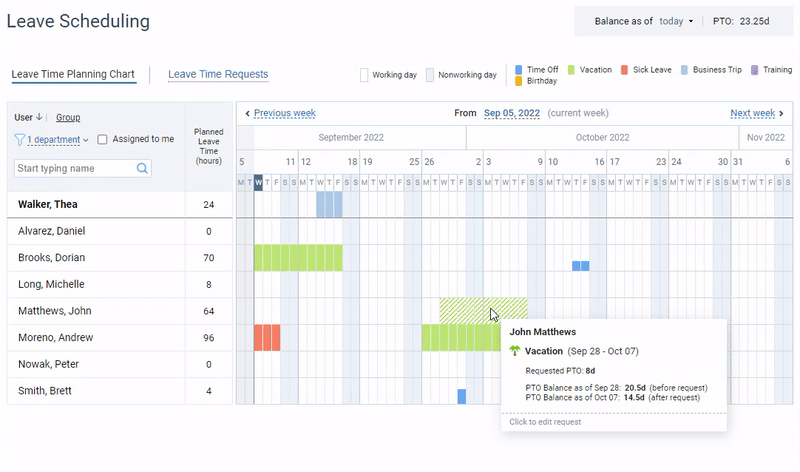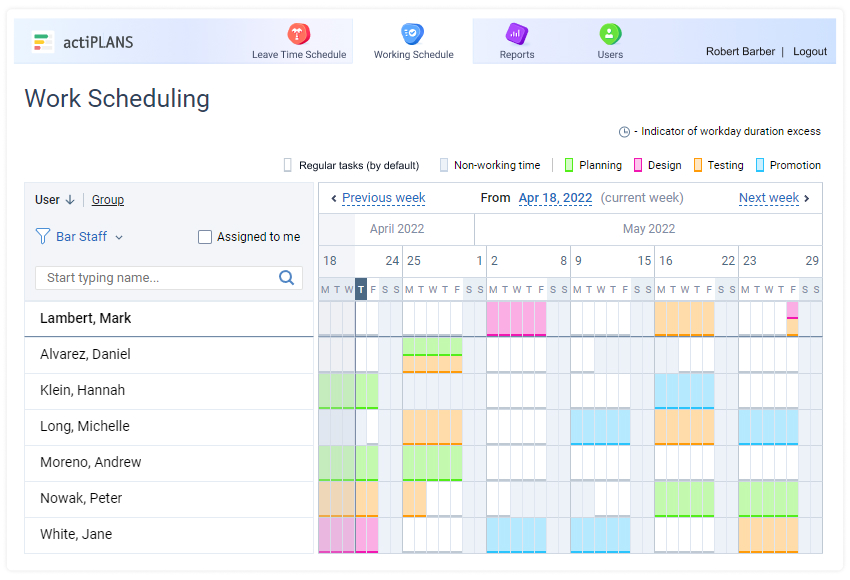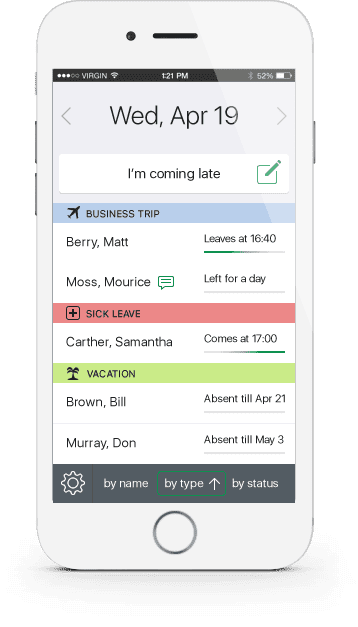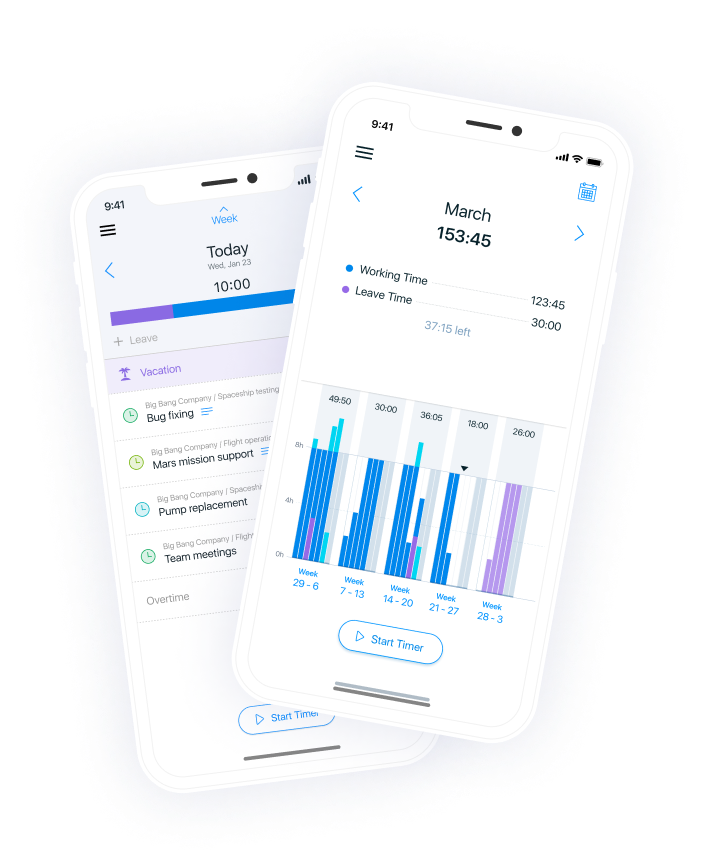Scheduling shifts for your transportation department can feel like an unsolvable puzzle. You’re constantly running up against driver availability, budget constraints, and last-minute changes that throw everything off balance.
But don’t despair! With the right strategy in hand, it is totally possible to put together an efficient transportation employee scheduling system that doesn’t involve pulling out half your hair in frustration.
In this blog post, we’ll take you through some proven staff scheduling tools and unexpected solutions that will help you to properly manage your business resources and outmaneuver even the trickiest of logistical hurdles with ease.
Ready? Let’s dive in!
4 Biggest Challenges in Transportation Employee Scheduling
1. Staff shortages
Staff is the lifeblood of the transportation industry. Without good employees, it would easily grind to a halt. Yet, unfortunately, staff shortage is one of the most poignant challenges facing all transportation businesses today. It has a ripple effect on the entire industry, resulting not only in poorer staff scheduling decisions but also in:
- Longer lead times
- Increased transportation costs
- Reduced performance efficiency
- Decreased customer satisfaction due to an uptick in shipping errors
Among the main reasons for staff shortages is aging drivers.
According to the 2021 report by the U.S. Bureau of Transportation Statistics, 23.9% of all transportation employees were over 55, and a staggering 43.3% of workers in transit were over that same age.
Such evidence is alarming because as drivers age, they naturally face a higher risk of health conditions that may interfere with their ability to work productively. Additionally, many older workers are retiring, leaving vacancies that are hard to fill.
Another big factor is the perception of the industry itself. Many young people do not see truck driving as a viable long-term career option, preferring to pursue more attractive jobs in other industries instead.
In a situation like this, creating effective staff schedules that promote business productivity and reduce employee burnout is definitely a hard call.
2. Mobile workforce
Scheduling a fleet of drivers to cover shifts across multiple locations while accounting for traffic conditions, delivery deadlines, and driver availability? This sounds challenging enough! Yet throw in the fact that some of your workers may not be easily reachable when on the road or have reliable internet access to stay in touch with – and suddenly, the workforce management process becomes an overwhelming task.
Furthermore, transportation is always a team effort. Dispatchers, load planners, and managers must work closely with drivers to ensure that logistics are flowing smoothly. But when you don’t have a clue of your employees’ whereabouts, communication breakdowns, and process bottlenecks are more likely to occur, causing costly delays and a host of other logistical headaches.
3. Variability in seasonal demand
Demand for transportation services varies depending on the season:
For instance, during Christmas, there is a surge in demand for package delivery services as people scramble to send gifts to loved ones. And in the summer, demand for travel services skyrockets as families take vacations and students head back home from college.
The inability to accurately predict and plan such spikes in demand often results in overbooking, missed pickups, and delayed deliveries. This creates unhappy customers while increasing the risk of financial loss and damaged business reputation.
Moreover, the need to ramp up operations during peak seasons can easily put a strain on your resources. Varying staffing needs must be accommodated to ensure optimal coverage and efficiency, which is rather difficult for smaller carriers with limited manpower.
4. Compliance with labor laws
The transportation industry is a heavily regulated field. Drivers must comply with strict hours-of-service rules, maintain safety standards, and operate within specific parameters – all of which require close monitoring and oversight.
When drivers are constantly moving from one location to another without any close face-to-face supervision, it becomes increasingly difficult to ensure they are following all the protocols and staying safe on the road.
Their failure to do so not only has the potential to endanger other motorists and drivers themselves but also entails serious legal risks for the carrier.
5 Practical Solutions to Most Common Staff Scheduling Challenges
1. Encourage and track employee time off
A generous paid time off policy is one of the best ways to promote employee well-being and attract top talent in any industry. However, to make it work to your advantage, employee time off must be thoroughly tracked.
You wouldn’t want to drive a rig without a steering wheel, would you? And likewise, you wouldn’t want to manage employee leave without reliable leave management software.
Here’s why:
- In the transportation industry, safety is key. It’s not just a superficial statement, it’s a matter of life and death. If employees are overworked or fatigued, they can easily end up in accidents on the road. But with the help of reliable leave management software, you can make sure that employees are getting the rest and time off they need to stay safe and alert on the job.
- Software helps to optimize your operations and save money. With a clear understanding of who is taking leave and when, you can plan your schedules more effectively and avoid costly overtime or staffing shortages. Plus, by automating your leave tracking and management, you can reduce errors and save time on administrative tasks.
Nowadays, you can choose from a plethora of diverse leave management systems with different functionality and price. But to alleviate your search for a simple, flexible, affordable yet efficient solution, we recommend you try actiPLANS.

actiPLANS is a user-friendly staff scheduling software with comprehensive leave management functionality. It allows you to:
- Create multiple custom leave types,
- Streamline PTO accrual and perfectly align it with your needs
- Approve employees’ incoming leave requests in a matter of seconds
- Run various time off reports to analyze absence trends
And that’s not all!
actiPLANS has plenty of other features that make leave management a breeze. Check out this post to explore them in greater depth or sign up for a free 30-day trial here. 👈
2. Consider employees’ shift preferences
Of course, in such a resource-constrained and high-pressure industry as transportation, it’s not always possible to take into account employee preferences when it comes to staff scheduling. Nevertheless, when even a little chance arises, you can benefit from asking your workers when they want to work instead of forcing random shifts upon them.
Just think about it: when people have at least some control over their schedules, they start to feel more valued and respected. And when people feel valued and respected, they tend to be more satisfied with the workplace and go above and beyond in their work.
Plus, higher employee satisfaction can help you reduce turnover rates. And let’s not forget about the potential cost savings – staff turnover is expensive!
So, here are a few things you can do to keep your workers satisfied:
- Communicate with your employees. Find out what they need and want out of their work schedule. Maybe one employee is a night owl and prefers to work later shifts while another employee needs to leave early on certain days to pick up their kids from school. Whatever it may be, take note of these preferences and try to incorporate them into the schedule as much as possible.
- Prioritize fairness. Make sure that everyone has an equal chance to get their preferred shift times. This could mean creating a rotating schedule or allowing employees to take turns, giving each other their preferred time off dates or work dates at regular intervals.
- Adopt an employee self-scheduling system. Using a tool like actiPLANS, your employees can easily submit their preferred work shifts via a visual timeline, leaving you with the only task of approving or reorganizing them in line with current business needs. Once the schedule is finalized, actiPLANS will automatically let your employees know when they must show up at work, saving you some time on team communication.

3. Equip your team with a mobile attendance app
Outdated pen-and-paper methods or clunky software don’t work that well for the field workforce and constantly moving employees. Therefore, as a manager in the transportation industry, you need to equip your team with a mobile attendance app.
A good mobile attendance app provides real-time visibility into your team members’ availability at their workplace, which means you can monitor their adherence to the schedule and adjust it accordingly.
When it comes to choosing a mobile solution, you have several options to consider:
- A complex system with features for GPS tracking and facial recognition
- A manual-entry or party-automated online timesheet where employees can track hours against specific activities or tasks
- A simple mobile absence tracker that employees may use to inform colleagues about last-minute schedule changes, absences, tardiness, etc.
While the first option provides highly accurate attendance data and promotes a strong sense of control over your workforce, it usually comes at a high price and increases the risk of micromanagement. The latter, in turn, can make employees much more stressed and dissatisfied with the workplace.
If that’s something you’re trying to avoid, then opt for the super-simple actiPLANS Mobile – it doesn’t include any fancy GPS tracking features but gives your team effective tools to submit leave requests on the go and check on colleagues’ availability.

Need something more precise and elaborate? Then try out actiTIME!
This multifunctional solution helps to keep an accurate track of working hours either manually or automatically. It can be used to record the exact time your employees begin and finish working on various tasks + monitor their work statuses (aka locations).
And the best part: actiTIME can be seamlessly integrated with actiPLANS to provide you with a comprehensive picture of all your resource management results. Plus, it offers a handy mobile app too, enabling your team members to track hours wherever they are – even offline!
4. Master predictive scheduling
Whether it’s transporting goods from a warehouse to a store or delivering packages to individual customers, every minute counts! And that’s where predictive scheduling is of tremendous help – it offers an effective way to plan out your routes, optimize appropriate staffing levels, and ensure on-time deliveries.
Essentially, predictive scheduling is about using data and analytics to accurately forecast demand for transportation services and schedule resources accordingly. As a result, it reduces the incidence of delays and other costly logistics errors and helps to keep your customers happy.
To truly master predictive scheduling, you must have access to high-quality data and analytics tools. In other words, you need to invest in the latest forecasting technology and ensure that all relevant data – e.g., expected workload surges, employee absences, and even weather conditions – is properly collected and analyzed.
To find out how it all works in greater detail and explore some of the most prominent AI-powered team scheduling tools, feel free to check out this post.
5. Stay in control of overtime hours
Keeping track of overtime hours in the transportation industry is not just a matter of fairness and good record-keeping practices. It’s actually a crucial aspect of ensuring the safety and well-being of both drivers and passengers alike.
So, let’s revisit some potential consequences of not tracking overtime hours properly:
- Increased risk of accidents: Drivers are often subject to highly demanding schedules and long hours on the road (even without overtime). Combine this factor with the inherent risks of operating large vehicles at high speeds, and you increase the occurrence of fatigue, impairing a driver’s ability to react quickly and make good decisions.
- Compliance issues: As mentioned earlier, there are laws and regulations governing the number of hours drivers can work. Failing to keep accurate records of overtime hours could lead to non-compliance and potentially costly penalties.
- Burnout and turnover: Working long hours on a regular basis can take a toll on anyone’s physical and mental health. If drivers feel overworked and undervalued, they may be more likely to leave their jobs, which means higher turnover and recruitment costs for your business.
The obvious and effective solution to the issue of overtime is a high-quality automated time tracker – just like actiTIME Mobile.
It features one-click timers that even the busiest of drivers can easily switch on when starting a shift, pause when taking breaks, and stop entirely once the shift is over.
Forgot to pause a timer before going on a break? No worries!
It’s possible to manually edit your time entries when mistakes occur. This way, you can collect highly precise data on the amount of time every driver stays on the road during the day and spot any overtime hours at a glance.

Ready to give it a whirl? Sign up for a free actiTIME trial here.
Conclusion
In the end, no matter what transportation business you’re running, having effective employee scheduling practices in place is essential for success!
By following the tips outlined above, you can create a transparent scheduling process that meets both the needs of your business and your employees.
So, remember to:
- Encourage and track employee time off
- Consider employees’ shift preferences
- Equip your team with a mobile attendance app
- Master predictive scheduling
- Stay in control of overtime hours
Lastly, to bring the best out of the employee scheduling process, make sure to leverage modern technology, such as actiPLANS and actiTIME. With their assistance, you will be able to streamline and simplify the task of staff scheduling while improving employee productivity and well-being.
Good luck!



